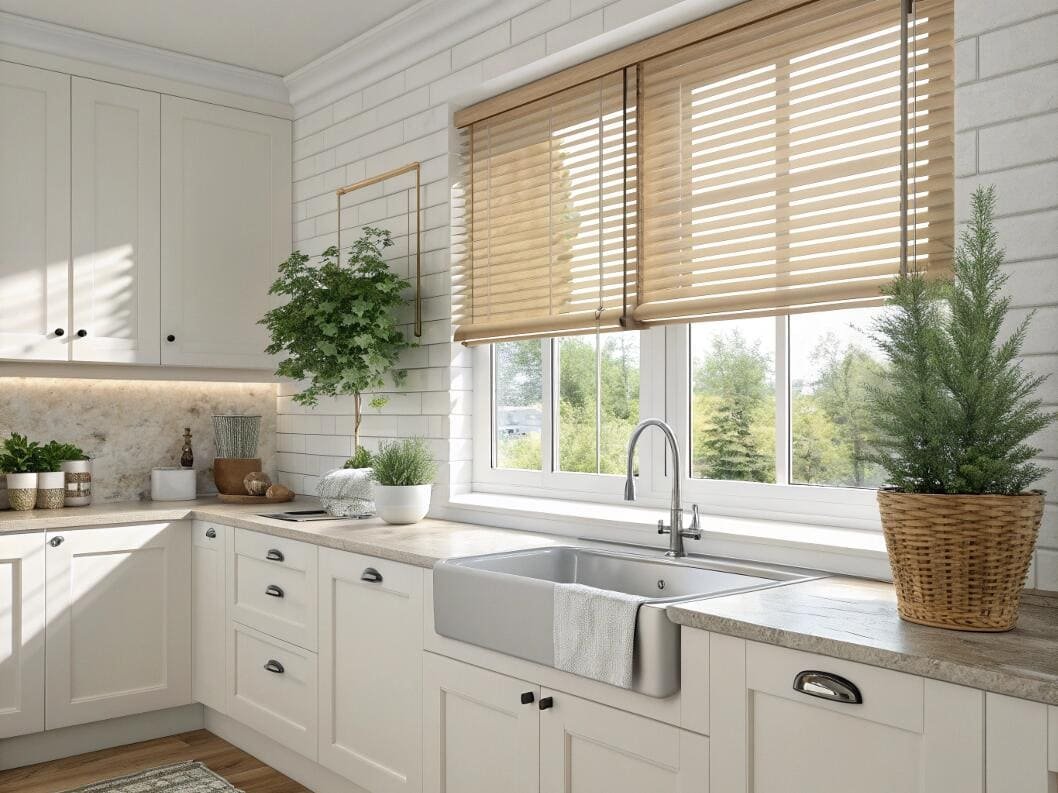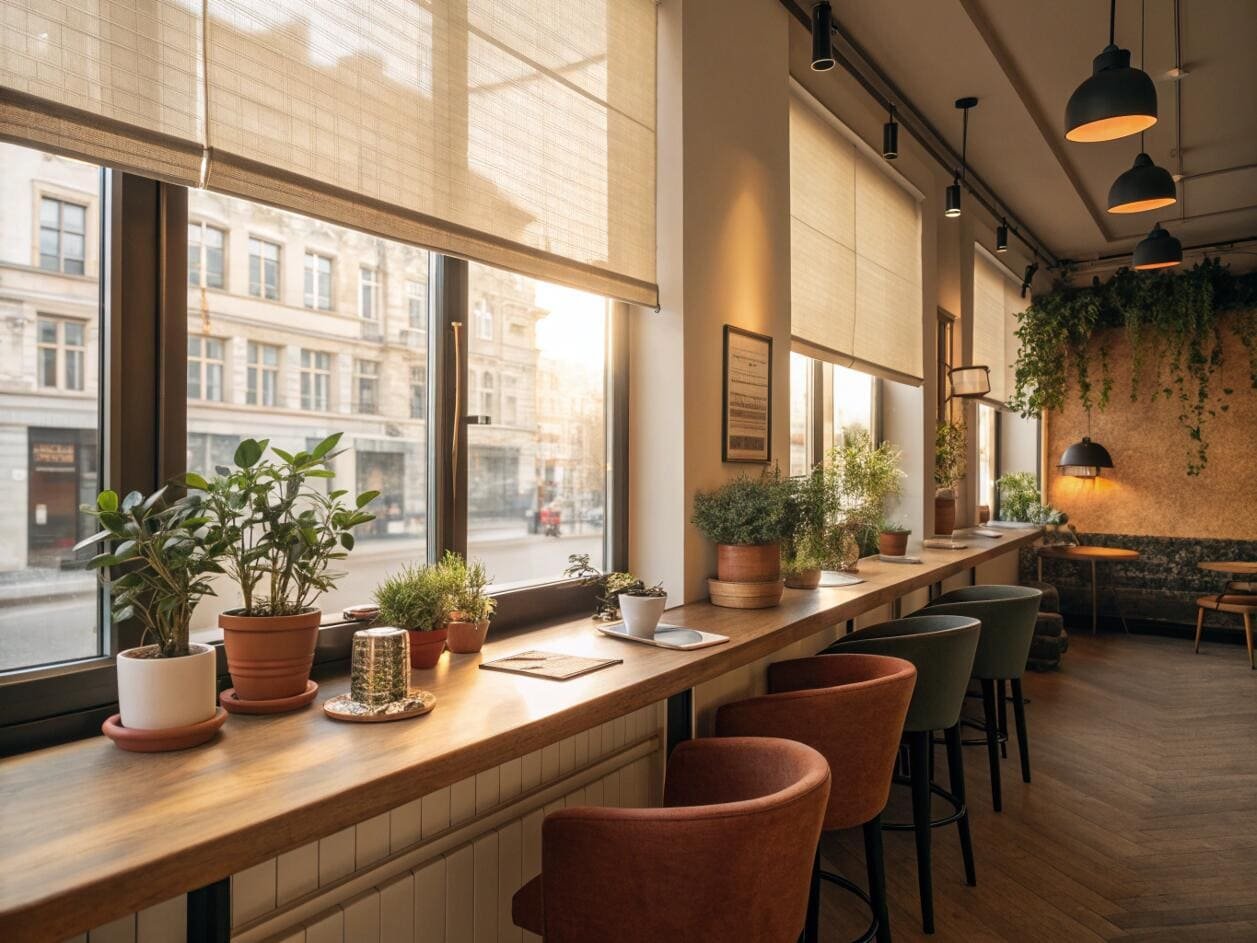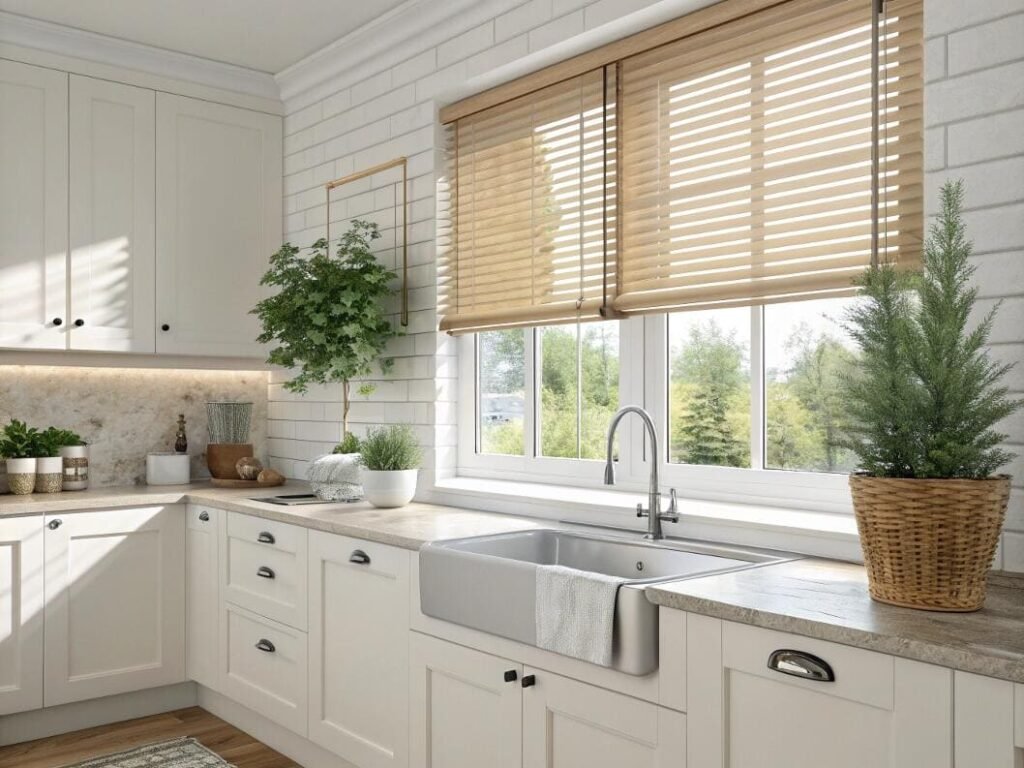Confused by blinds versus shades? The wrong choice can compromise a project's design and function. Let’s explore their core differences to ensure you choose correctly every time.
Blinds[^1] consist of individual slats (vanes) made of hard materials that can be tilted or raised. Shades[^2] are made from a single piece of soft fabric that rolls or folds up. Blinds excel at directing light, while shades offer better insulation and a softer look.

As a supplier, I see this question come up constantly with designers and contractors. Getting it wrong is more than a simple mistake; it can mean specifying a product that fails to meet your client's most basic needs for privacy, comfort, or style. They are two fundamentally different tools for two different jobs. Understanding the core identity of each is the first step in mastering window treatment specification[^3] for your projects.
How do blinds and shades differ in construction, materials, and operating mechanisms?
Their spec sheets mention slats, fabrics, and headrails. A misunderstanding can lead to ordering a product that doesn't operate as expected. Let's break down how they are built.
Blinds use hard slats (wood, aluminum) that tilt via a wand or cords. Shades use a continuous panel of soft fabric (polyester, linen) that rolls or folds up using a clutch or motor, without a tilt function.

The physical build of these two products dictates everything about how they perform. I always tell my clients to think of blinds as architectural and shades as textural. Blinds are assembled from hard components, creating a structured look. Shades are based around a single piece of fabric, offering a softer, more seamless appearance. This fundamental difference in construction has a huge impact on how they operate, what they're made of, and how they feel in a room. For example, the simple, durable clutch mechanism in our roller shades is designed for thousands of cycles, offering a reliability that complex corded systems on cheap blinds just can't match over time.
Blinds vs. Shades: A Breakdown
| Aspect | Blinds | Shades |
|---|---|---|
| Structure | Individual hard slats (vanes) held by cords. | A single, continuous piece of soft fabric. |
| Materials | Wood, Faux Wood (PVC), Aluminum, Vinyl. | Polyester, Cotton, Linen, Fiberglass, Vinyl. |
| Operation | Two functions: Lift up/down and tilt slats open/closed. | One function: Roll or fold up/down. |
Are blinds or shades better for privacy?
You need total privacy for a client's bedroom or bathroom. Even "closed" blinds can have gaps. Don't risk compromising your client's security or peace of mind.
Shades are decisively better for privacy. A single, solid piece of fabric, especially in a blackout material, offers complete coverage with no light gaps or "peek-through" routes between slats.

When a client's top priority is privacy, I always recommend a shade. I learned this lesson early on after a designer specified beautiful 2-inch wood blinds for a ground-floor bedroom. The client loved the daytime look but felt exposed at night when the interior lights were on. Light leaking from the route holes and between the slats made them feel watched. We solved the problem by replacing them with blackout cellular shades[^4]. The solid fabric panel of a shade, especially when fitted snugly in a window frame, leaves no doubt. For ultimate privacy, combining a blackout roller or cellular shade with side channels creates a completely sealed, light-proof barrier that is impossible to see through. Blinds, by their very nature, have dozens of seams between the slats, creating opportunities for light and sight lines to pass through.
Which provides better light control and filtering: blinds or shades?
Controlling natural light is an art. Too much causes glare, and too little makes a room gloomy. You need precise control to set the perfect mood for your client.
Blinds offer better light direction by tilting their slats to redirect sunlight. Shades offer better light filtering, using various fabric opacities to diffuse light consistently, from sheer to complete blackout.

This is a nuanced question. The "better" choice depends on the kind of control you need. For a home office where the goal is to have bright, natural light without it shining directly on a computer screen, blinds are the champion. By tilting the slats upward, you can bounce sunlight off the ceiling, illuminating the entire room with soft, indirect light.
Shades, on the other hand, are masters of diffusion. They can't redirect light, but they can perfectly filter it. The opacity of the fabric determines the effect. For example, the solar shades we provide for commercial projects are engineered to cut glare and UV rays while preserving the outside view. For a living room, a light-filtering cellular shade can create a warm, gentle glow. For a bedroom or home theater, a blackout shade provides the ultimate control: complete darkness. The choice comes down to redirecting harsh light versus setting a consistent, filtered mood.
How do blinds and shades compare in terms of energy efficiency and insulation?
Windows are a huge source of energy loss in any building. Choosing the wrong window covering means higher utility bills for your client. Don't let your beautiful design leak money.
Shades, particularly cellular (honeycomb) shades, are far more energy-efficient. Their unique cell structure traps air, creating an insulating barrier that blinds, with their many gaps, simply cannot provide.

This isn't even a close race. When it comes to insulation, a cellular shade is an engineered solution, while a blind is more of a decorative afterthought. I often use an analogy with my clients: choosing blinds for insulation is like wearing a fishnet shirt in winter. It might look interesting, but it does almost nothing to stop the cold. A cellular shade is like putting on a high-tech thermal jacket. The secret is the trapped air in its honeycomb-shaped cells. This pocket of still air is a powerful insulator that dramatically reduces heat transfer, keeping rooms warmer in the winter and cooler in the summer. Blinds, being made of hard, often conductive slats with dozens of gaps, actually encourage air movement (convection) at the window, which is the enemy of insulation. For any project where energy performance is a goal, cellular shades are the clear winner.
Why are shades more expensive than blinds?
You see the price difference and wonder if it's justified. It's tempting to choose the cheaper option to meet a tight budget. But it's important to understand what you're paying for.
Shades are often more expensive because they involve more complex manufacturing and higher-quality materials, like performance fabrics or intricately assembled cellular structures. Basic blinds can be mass-produced very cheaply using simple commodity materials.
The cost difference comes down to materials and labor. Manufacturing a standard vinyl or aluminum blind is a highly automated process of stamping out slats and threading them with cords. The materials are inexpensive. A shade, however, is a different story. A roller shade requires a precision-engineered clutch mechanism and a large, continuous piece of high-quality fabric. A cellular shade requires specialized machinery to pleat and bond the fabric into its honeycomb shape. A Roman shade requires skilled labor for cutting and sewing. The fabric itself is a huge cost driver. A basic polyester is one thing, but a designer linen or a high-performance solar screen fabric costs significantly more. It's like comparing a simple, stamped-metal spoon to a piece of hand-thrown pottery. Both can hold liquid, but the skill, time, and quality of materials involved are vastly different.
Are more expensive blinds worth it?
You're looking at a premium blind with a high price tag. Is it just a fancy brand name, or are you paying for real quality that will benefit your client?
Yes, more expensive blinds and shades are worth it when the price reflects better materials, more durable mechanisms, and smart motorization. These features provide longer lifespan, superior performance, and greater convenience, offering better long-term value.
I always advise project buyers to look past the initial price tag and consider the total cost of ownership. A cheap, off-the-shelf blind might save money today, but it will likely fail in just a few years. The flimsy slats will bend, the plastic tilt mechanism will snap, and the cords will fray. A well-made blind, constructed with thick-gauge aluminum, sustainably sourced hardwood, or high-quality faux wood with UV inhibitors, will look and function perfectly for a decade or more. The most significant value-add in today's market is motorization. A reliable smart motor from VelaBlinds not only provides incredible convenience and a clean, cord-free look, but it also extends the life of the product by ensuring it's always operated smoothly and correctly. Paying more upfront for quality and smart features often means a lower cost per year over the life of the product.
What are the current trends for window treatments?
You want your project to feel modern and on-point. An outdated window treatment can make an entire room feel stale. Don't let your design look like it was chosen a decade ago.
The biggest trends are motorization and smart home integration for convenience, minimalist designs with clean lines like roller and cellular shades, and a focus on natural, textured materials for warmth and an organic feel.

In my conversations with hundreds of designers like Emma, three major trends consistently come up. First and foremost is smart home integration. This is the new standard of luxury. Clients expect to control their blinds with their voice, a phone app, or automated schedules. This is the core of our mission at VelaBlinds. Second is a move toward minimalism. Clean lines are in. People are choosing simple roller shades, sleek cellular shades, and wide-slat blinds over the fussy, decorative treatments of the past. It’s about creating a calm, uncluttered look. Finally, there's a huge demand for natural textures. Even in minimalist spaces, clients want warmth. Woven wood shades, linen Roman shades, and real hardwood blinds bring an organic, tactile element into a room that is both timeless and very current.
Which rooms and window types are best suited for blinds vs shades?
You've chosen a beautiful window treatment. But is it right for the specific room? Putting the wrong product in a high-moisture kitchen or on a sliding door can lead to client frustration.
Blinds are great for offices where redirecting light is key. Shades are better for bedrooms (blackout), bathrooms (moisture-resistant rollers), and for achieving maximum energy efficiency anywhere in the home.

Matching the product to the environment is a critical final check. I always work with my clients to ensure the choice makes sense not just aesthetically, but functionally. A beautiful real wood blind will warp in a steamy bathroom, and a delicate silk Roman shade has no place in a high-traffic kid's playroom. I recently helped a developer outfit a series of rental properties. We chose durable, moisture-resistant faux wood blinds[^5] for the kitchens and bathrooms because they can be wiped clean and stand up to wear and tear, which was the project's top priority. Making the right choice room by room ensures durability and long-term client satisfaction.
Room-by-Room Recommendations
| Room/Window | Best Choice | Key Reason |
|---|---|---|
| Bedroom | Shades (Cellular/Roller) | Superior privacy and blackout capabilities for better sleep. |
| Bathroom | Blinds (Faux Wood/Vinyl) | Moisture-resistant materials prevent warping, sagging, or mold. |
| Home Office | Blinds (Wood/Aluminum) | Excellent for tilting to redirect light and eliminate screen glare. |
| Living Room | Both | Blinds for an architectural look; shades for a softer, cozier feel. |
| Sliding Door | Vertical Blinds / Panel Track Shades | Designed for wide spans and easy horizontal movement. |
Conclusion
Blinds, with their tilting slats, offer precise light direction. Shades, with their solid fabric, provide superior privacy, insulation, and light filtering. Understanding this core difference is the key to choosing perfectly every time.
---
[^1]: Explore the benefits of blinds, including light control and aesthetic appeal, to make informed choices for your space.
[^2]: Discover how shades can enhance privacy and insulation, making them a great choice for various rooms.
[^3]: Get insights on best practices for selecting the right window treatments for various applications.
[^4]: Discover the unique design of cellular shades that traps air and improves insulation.
[^5]: Learn about the durability and moisture resistance of faux wood blinds for various environments.Partner with VelaBlinds for Your Next Project
Smart window treatments shouldn't be complicated. After working with 500+ distributors and contractors worldwide, I've streamlined the process to get you quality products, competitive pricing, and reliable support - every time.
Why project professionals choose VelaBlinds:
- ✅ Fast, Accurate Quotes - Detailed specs and pricing within 24 hours
- ✅ Transparent Pricing - No hidden fees, volume discounts clearly outlined
- ✅ Quality Assurance - Direct partnerships with certified OEM manufacturers
- ✅ Project Support - Dedicated account manager from quote to delivery
Start your next project:
📧 Quick Quote: Send your requirements to info@velablinds.com
📱 Direct Contact: WhatsApp +86 137 2012 8317
🌐 Browse Solutions: https://velablinds.com/
📁 Product Resources: Access spec sheets, catalogs & project files
Paul Chen, Founder
"I built VelaBlinds to solve the real challenges I faced as a project buyer - long lead times, unclear specs, and unreliable suppliers. Let's discuss how we can power your projects with smarter blinds."
Serving distributors and contractors across North America, Europe, and Australia since 2018.




